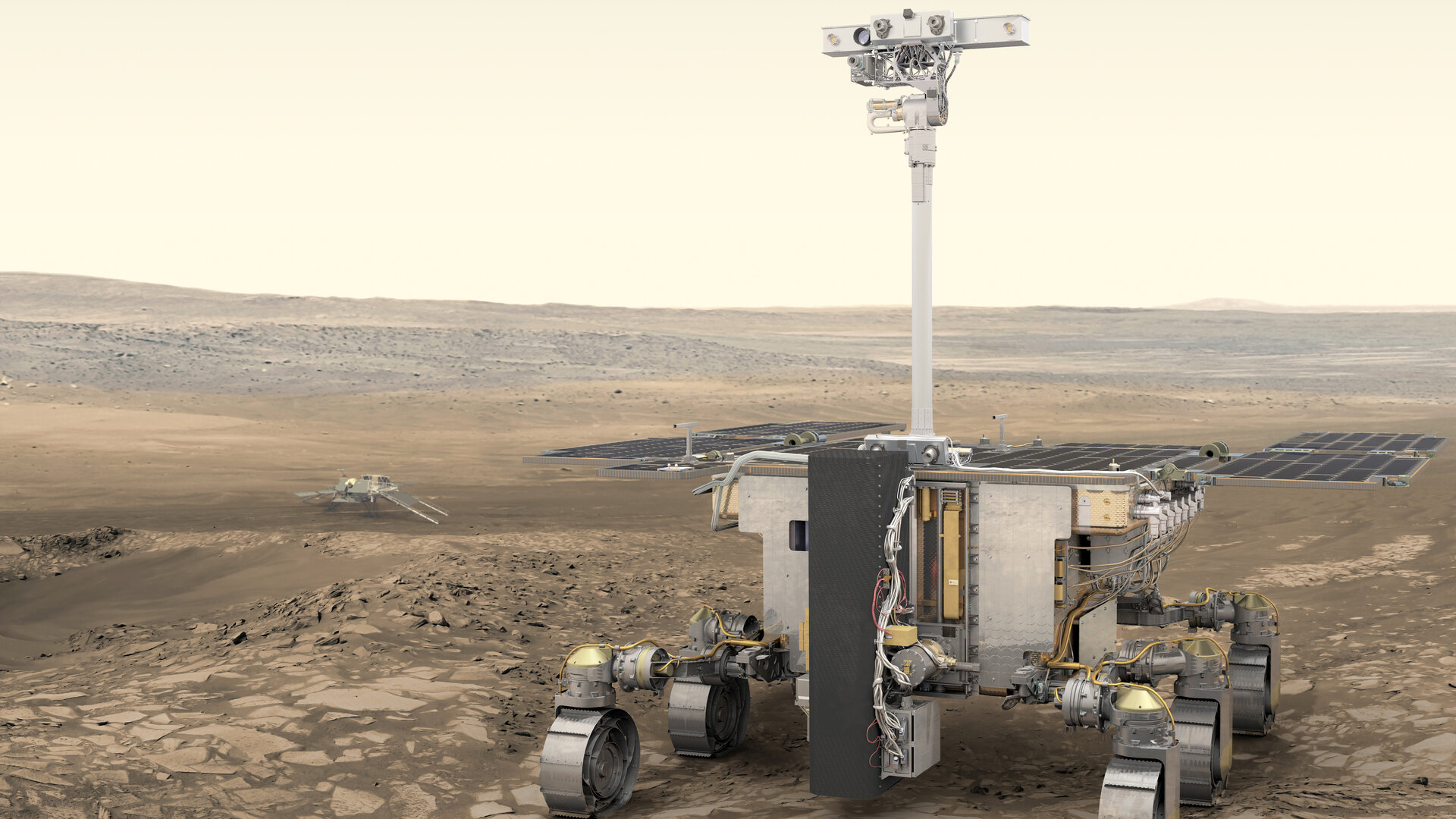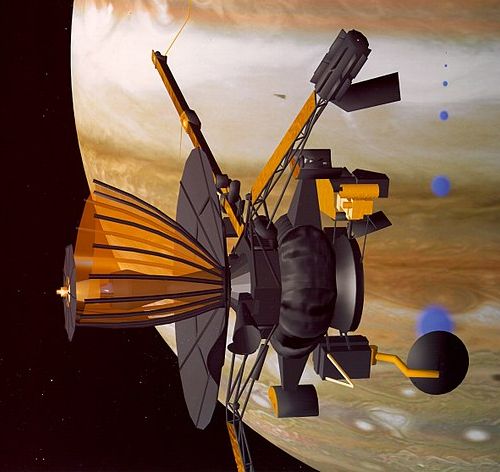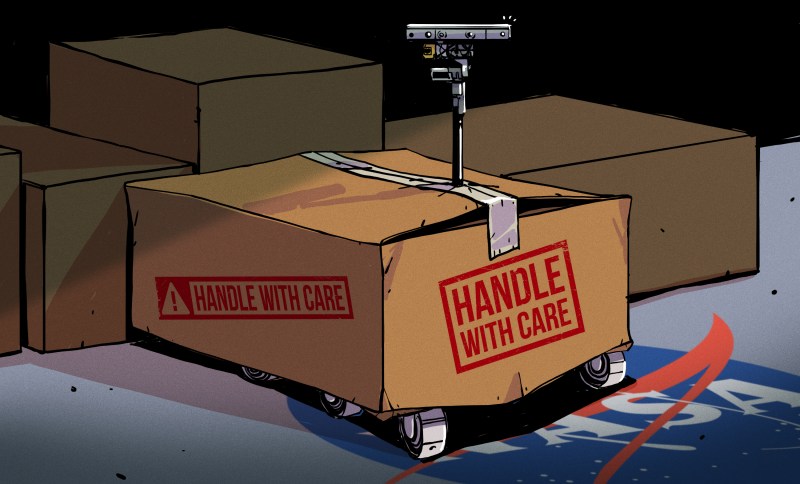In planetary exploration circles, Mars has quite a bad reputation. The Red Planet has a habit of eating spacecraft sent there to explore it, to the degree that nearly half of the missions we’ve thrown at it have failed in one way or another. The “Mars Curse” manifests itself most spectacularly when landers fail to negotiate the terminal descent and new billion-dollar craters appear on the Martian regolith, while some missions meet their doom en route to the planet, and an unlucky few have even blown up on the launchpad.
But the latest example of the Mars Curse, the recent cancellation of the second half of the ExoMars mission, represents a new and depressing failure mode: war — specifically the Russian invasion of Ukraine. The international outrage over the aggression resulted in economic sanctions and diplomatic isolation of Russia, which retaliated by ending its partnership with the European Space Agency (ESA), depriving the mission of its launch vehicle and dooming the mission that would have landed the rover Rosalind Franklin on Oxia Planum near the Martian Equator in 2023.
While there’s still a chance that administrators and diplomats will work things out, chances are slim that it will be in time for the narrow launch window that the mission was shooting for in September of 2022. That means the Rosalind Franklin, along with all the other flight hardware that was nearly ready to launch, will have to be put in storage at least until the next launch window opens in 2024. That begs the question: how does one put a complex spacecraft into storage? And could such mothballing have unintended consequences for the mission when it eventually does fly?
Electricity and Heaters
Before the confounding effects of human armed conflict even came into play, the ExoMars mission was very ambitious and quite complicated. Planning dates back to the early 2000s, when the ESA and NASA entered into a joint agreement for a mission that would include orbiters, rovers, and even a sample-return aspect. But in 2012, NASA, which was to provide the launch vehicle and descent platform for the ExoMars rover, backed out of the partnership, due to budget constraints caused at least in part by cost overruns on the James Webb Space Telescope. This resulted in ESA entering into a full partnership with Roscosomos for launches aboard their Proton launch vehicles, as well as provision of the descent vehicle needed to get the rover safely down to Mars.

With the partnership in tatters just six months from the launch window, the completed rover, now named in honor of British chemist and crystallographer Rosalind Franklin, and the descent vehicle, called Kazachok or “little cossack,” have to be safely stored for at least two years. While most spacecraft intended for deep-space missions are necessarily designed with storage during the often months-long interplanetary transit in mind, keeping a delicate machine designed for the vacuum of space safely stored on Earth is another matter entirely.
One of the main drivers of how Rosalind Franklin and Kazachok will be stored is their power systems. Both spacecraft are powered by solar panels, which may represent a small blessing to engineers devising the storage plan. Like earlier NASA rovers Spirit and Opportunity, Rosalind Franklin uses solar panels to provide electricity. The rover is relatively small, only 300 kg or so, and has modest power requirements that can be met by the 1,200 Watt solar array on the top of its hull. This stands in contrast to the much larger Curiosity and Perseverance rovers, each the size of a compact car and powered by a pair of plutonium-powered radioisotope thermoelectric generators. While the 87.7-year half-life of Pu-238 would mean the power output of RTGs wouldn’t decay much over two years in storage, it would be a non-zero amount that mission engineers would need to account for.

Just because RTGs weren’t chosen for the power source doesn’t mean Rosalind Franklin still doesn’t have some radioactive decay concerns to deal with. The Martian nights are brutally cold, and the days aren’t much better, so sensitive electronics need to be warmed up to work properly. To keep things toasty, the rover is equipped with Russian-made radioisotope heating units (RHUs), which are essentially RTGs without the electricity-generating bits. NASA’s RHUs use Pu-238 as a heat source; regardless of the isotope used on the Roscosmos-supplied RHUs aboard Rosalind Franklin, chances are good decay of the fuel source during storage will have to be accounted for.
But the lucky break in the choice of solar panels to power these spacecraft is confounded somewhat by the need for batteries to store the power. The rover uses a 1,142-W-h lithium-ion battery bank, which will require some careful management in storage. Lithium-ion batteries don’t respond well to long-term storage either fully charged or discharged, so the goal would likely be to hold the batteries at something like 50% state of charge (SOC). Even with optimal storage, it may be prudent to just replace the rover’s batteries with new ones before being flown, since the stakes are so high. For example, on the Japanese Hayabusa asteroid lander and sample return mission in 2005, a thruster malfunction caused the spacecraft’s solar panels to not align with the Sun and over-discharged some of the lithium-ion batteries, which caused some tense moments getting the samples back to Earth. A Mars mission needs no such drama added to its stakes.
Pyrotechnics
Since the earliest days of the Space Race, the launch of every spacecraft has been a carefully orchestrated series of controlled explosions. From stage separations on the launch vehicle and opening payload fairings to jettisoning heatshields and parachute deployment, pyrotechnic devices are involved in almost every step along the way to space.

Aerospace engineers have a lot of experience with pyrotechnics, and have even standardized these “energetic devices” to a certain degree. NASA, for example, has their “NASA Standard Detonator,” which is a machined stainless steel plug filled with less than half a gram each of lead azide and the high-explosive RDX squeezed into it. The NSD has a fitting into which another pyrotechnic device, the “NASA Standard Initiator,” is attached.
The NSI is filled with ZPP, a mixture of zirconium, potassium perchlorate, and the synthetic rubber Viton B as a binder. A small filament embedded in the ZPP heats up when a current passes through it, which causes the zirconium fuel to ignite in the presence of the potassium perchlorate oxidizer, producing sufficient heat and pressure to set off the explosives in the NSD.
The ESA-built Rosalind Franklin is likely to have similar pyrotechnic devices, which will have similar storage characteristics. Studies on the effects of heat and humidity on ZPP-based initiators show that while generally stable, humidity plays a major role in degrading initiator performance, primarily by degrading the Viton binder and allowing access to the fuel and oxidizer to atmospheric water. The upshot of all this is that, like just about everything else, pyrotechnics are best stored in a cool, dry place.
Lubricants
Most spacecraft, even those never destined to set down on a planetary body, have at least some mechanical joints, to deploy all the antennas, solar panels, and sensors that need to be folded up so the machine can fit inside its launch fairing. Rovers have orders of magnitude more mechanical complexity than orbital craft, and are littered with joints of every imaginable type. And all those joints need a range of lubricants, all of which are subject to degradation during extended storage.

The loss of performance by lubricants on spacecraft in storage is no joke, and nearly cost NASA the Galileo flyby mission of Jupiter in the 1990s. Galileo had been in storage for four and a half years before its launch, thanks in part to the Challenger disaster. By the time antenna deployment was attempted during the transit to Jupiter, the lubricants intended to provide a smooth release of the antenna ribs had been in place for over a decade, and were severely degraded. This left the antenna partially deployed and greatly impacted data throughput.
As a result of this mishap, the effects of pre-flight storage on critical lubricants have been extensively studied, with the conclusion being that molybdenum disulfide greases are best stored under “dry nitrogen” conditions, along with the occasional exercise of critical mechanisms to ensure that greases don’t stratify, or have their base oil separate from the soap used to thicken them. Engineers also need to be cautious of seals and other non-metallic components in contact with lubricants, which may soak up a significant amount of the base oil and thicken the reservoir of grease to the point of eventual joint failure.
While these are the high points, chances are good a mission as complex as ExoMars will have a thousand other details that will need to be seen to in order to ensure that Rosalind Franklin and Kazachok are kept in good order and ready to fly, hopefully when the next launch window comes around.
















Pretty sure the igniters aren’t stored onboard, there’s fake actuators. You don’t want one going off in your lab, ever. Kinda fubars your cleanroom.
The antenna failure on Galileo lead to a run flight software patch to compress the telemetry as the spacecraft transmitted.
Is there some reason that this Mars mission can’t be launched on some non-Russian rocket somewhere?
Plenty of ways to launch stuff into space in 2022 that aren’t Russian…
There is quite some engineering involved into integrating the mission with the launch vehicle, for example the following things need to be considered (and probably even more points I’m missing here, this is rocket science after all):
* Mechanical specifications/mounting points/maximum 3-dimensional payload size
* Allowable G-rating and vibrations
* Trajectory (with tolerance specification) at which the payload will be released (depends on the stages of the rocket, the Proton is using a 4-stage design for a mission like that)
* Communication interfaces between launch vehicle and the payload
* Thermal design (the radioisotope heat sources are generating heat all the time, even during launch or while waiting on the launch pad)
* Radiation protection while passing the Van Allen belt, the rocket may still provide some level of shielding at that time.
* Planetary protection (disinfection/making sure no earth-based microbial life will contaminate Mars).
If the mission is tightly engineered based on the available capabilities of the Proton rocket, it may be impossible to just use another rocket instead without major changes to the mission design. And even if another rocket is in principle able to meet the requirements, it will still take some engineering time to integrate it. Additionally there is also quite some lead time between ordering a rocket mission and having everything ready on the launch pad. All in all it is definitely challenging (and maybe impossible) to get it ready to launch until September, so if the political situation can’t be settled out soon there may be no alternative to waiting until the next launch window in 2024.
Elongated Muskrat yeeted his roadster in the direction of Mars tho, so obvious solution is repack it in clamshell separating Tesla Roadster shell and the launch hardware exists :-P
E didn’t worry about the roadster being recognizable after launch which immediately made the process vastly simpler
I understand, that it is difficult. But normally that’s not the same as “impossible”.
Two reasons: time and money
We had a rocket booked and effectively paid for. Now we don’t have a rocket and we don’t have budget to get a new one with this short a schedule. Rockets aren’t cheap and especially procuring a launch in a hurry is not cheap.
If we absolutely had to launch this year, we maybe could barely do it, but it would be extremely tight deadline to procure a completely new launch vehicle to integrate with. There’s a lot more to a launch than just ordering a rocket from a catalogue and whacking the satellite on top of it.
Waiting for the next launch window to do it without rushing is definitely safer and more economical option since it’s coming pretty quick anyway. We aren’t missing a once in a lifetime opportunity or anything like that, just two years.
This feels like something that a tweet to Musk could solve.
Help me, Elon Musk! You’re my only hope, of launching this to Mars!
Does somebody know, if one of his rockets would be at least theoretically able (payload capacity) to launch that thing?
Seems like one of the other members of the ESA could buck up and throw in a launchpad. I mean they are still gonna chip in on Solar Warden right? lol If only we had a megalomaniacal mollyhead that had their own rocket fleet…
“This resulted in ESA entering into a full partnership with _Roscosomos_ […]”